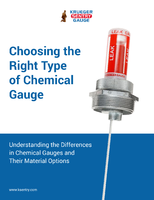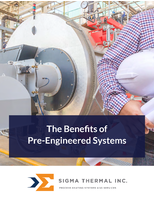Voluntary Standards cover spacecraft to food equipment.
Press Release Summary:
ANSI will publish snapshots of diverse standards initiatives undertaken in global and national standards. Concerning spacecraft, aerospace systems standard SAE AIR 1168/11-2008, Spacecraft Boost and Entry Heat Transfer, presents theoretical methods for computing and optimizing heat transfer to ensure efficient and safe launches. To protect consumers from food-related illnesses, NSF/ANSI 170-2008, Glossary of Food Equipment Terminology, defines terminology related to food equipment.
Original Press Release:
Voluntary Standards Cover the Spectrum: from Spacecraft to Food Equipment
In an effort to communicate the vital role that standards play in daily life, the American National Standards Institute (ANSI) will publish, on an ongoing basis, a series of snapshots of the diverse standards initiatives undertaken in the global and national standards arena, many of which are performed by ANSI members and ANSI-accredited standards developers. Two of the latest selections follow:
Spacecraft
The temperature of the earth's atmosphere ranges from -148°F (-100°C) to 2,730°F (1,500°C). In order to protect astronauts and costly equipment, engineers face the challenge of designing spacecraft that can withstand these extreme conditions. A recent addition to SAE AIR 1168, a family of aerospace systems standards published by SAE International will aid engineers in protecting spacecraft from the tremendous heat generated during take-off and entry into space.
SAE AIR 1168/11-2008, Spacecraft Boost and Entry Heat Transfer, presents theoretical methods for computing and optimizing heat transfer - the shifting of thermal energy from hotter objects to cooler objects - to ensure an efficient and safe launch.
SAE International is an ANSI organizational member and accredited standards developer committed to advancing the engineering of safe and environmentally sound mobility systems used in designing, building, maintaining, and operating self-propelled vehicles for use on land or sea or in air or space.
Food Equipment
According to the National Institutes of Health (NIH), each year roughly seven million people die from food-borne illnesses with an additional ten times as many affected by non-fatal food-related illnesses. Known to most consumers by the catch-all phrase "food poisoning," these illnesses are caused by bacteria, toxins, viruses, parasites, and other foreign bodies contaminating food when it is not properly manufactured, packaged, stored, or prepared.
To help protect consumers from food-related illnesses, NSF International, an ANSI organizational member and accredited standards developer, recently released NSF/ANSI 170-2008, Glossary of Food Equipment Terminology. NSF/ANSI 170-2008 revises NSF/ANSI 170-2007 and defines terminology related to food equipment including terms describing equipment, materials, design, construction, and performance testing as well as common definitions of terms used throughout NSF food equipment and sanitation. NSF/ANSI 170-2008 updates the food shield definition and provides definitions for cafeteria counter, carving station, cooking station, elementary school, mobile buffet counter, multiple tier, and self-service food shields.
NSF International is a not-for-profit, non-governmental organization dedicated to the protection of our food, water, and indoor air through standards development, product certification, education, and risk-management for public health, safety, and protection of the environment.




